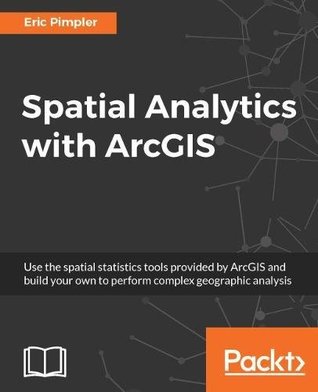

Most ebook files are in PDF format, so you can easily read them using various software such as Foxit Reader or directly on the Google Chrome browser.
Some ebook files are released by publishers in other formats such as .awz, .mobi, .epub, .fb2, etc. You may need to install specific software to read these formats on mobile/PC, such as Calibre.
Please read the tutorial at this link: https://ebookbell.com/faq
We offer FREE conversion to the popular formats you request; however, this may take some time. Therefore, right after payment, please email us, and we will try to provide the service as quickly as possible.
For some exceptional file formats or broken links (if any), please refrain from opening any disputes. Instead, email us first, and we will try to assist within a maximum of 6 hours.
EbookBell Team

4.1
60 reviewsSpatial statistics has the potential to provide insight that is not otherwise available through traditional GIS tools. This book is designed to introduce you to the use of spatial statistics so you can solve complex geographic analysis.
The book begins by introducing you to the many spatial statistics tools available in ArcGIS. You will learn how to analyze patterns, map clusters, and model spatial relationships with these tools. Further on, you will explore how to extend the spatial statistics tools currently available in ArcGIS, and use the R programming language to create custom tools in ArcGIS through the ArcGIS Bridge using real-world examples.
At the end of the book, you will be presented with two exciting case studies where you will be able to practically apply all your learning to analyze and gain insights into real estate data.
What you will learn Get to know how to measure geographic distributions Perform clustering analysis including hot spot and outlier analysis Conduct data conversion tasks using the Utilities toolset Understand how to use the tools provided by the Mapping Clusters toolset in the Spatial Statistics Toolbox Get to grips with the basics of R for performing spatial statistical programming Create custom ArcGIS tools with R and ArcGIS Bridge Understand the application of Spatial Statistics tools and the R programming language through case studies About the AuthorEric Pimpleris the founder and owner of GeoSpatial Training Services (geospatialtraining.com) and has over 20 years of, experience implementing and teaching GIS solutions using open source technology, ESRI and Google Earth/Maps. Currently, he focuses on ArcGIS scripting with Python and the development of custom ArcGIS Server web and mobile applications using JavaScript.
Eric has a bachelor's degree in geography from Texas A&M University and a master's degree in applied geography with a concentration in GIS from Texas State University.
Eric is the author of Programming ArcGIS with Python Cookbook (https://www.packtpub.com/application-...), first and second edition, Building Web (https://www.packtpub.com/application-...) and Mobile ArcGIS Server Applications with JavaScript, and ArcGIS Blueprints (https://www.packtpub.com/application-...), all by Packt Publishing.
Table of Contents Introduction to Spatial Statistics in ArcGIS and R Measuring Geographic Distributions with ArcGIS Tools Analyzing Patterns with ArcGIS Tools Mapping Clusters with ArcGIS Tools Modeling Spatial Relationships with ArcGIS Tools Working with the Utilities Toolset Introduction to the R Programming Language Creating Custom ArcGIS Tools with ArcGIS Bridge and R Application of Spatial Statistics to Crime Analysis Application of Spatial Statistics to Real Estate Analysis